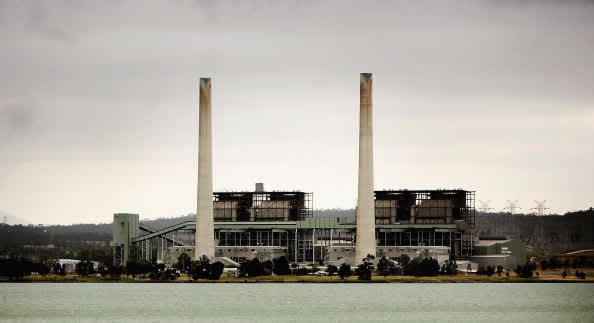Market pressures are mounting on coal as a flood of cheaper and more flexible renewable energy power continues to come online.
This is according to a new report by the think tank Institute for Energy Economics and Financial Analysis (IEEFA) and the advisory firm Green Energy Markets. The joint survey attempted to quantify just how precarious coal-fired power stations were to rising green energy.
It found that “several” of the country’s 25 coal-fired power stations that supply the National Electricity Market will face severe financial pressure and possible closure over the next four years – putting them in a far more dangerous position than previously thought.
This is because an additional 28 gigawatts of renewable energy is expected to come online by 2025. That would give us a total of 30GW of solar energy and 12GW of wind power, not including things like hydroelectric. In just four years time, renewables are forecasted to provide 40-50% of the energy we use.
This is a much higher expectation than what was previously predicted. By tracking the announcements of proposed wind and solar projects, authors Tristan Edis and Johanna Bowyer quantified the results to find that renewable contributions have been understated.

As more renewable power enters the market, the cost of electricity should fall. This will put further pressure on the coal and gas industries to compete in a flooded market. Coal-fired power stations are expensive to run due to the need for raw materials and often operate with fairly slim profit margins. This makes them vulnerable to market disruptions.
“The market is facing a tidal wave of new supply, much greater than anything government authorities or market analysts forecast or even contemplated just two years ago,” says Edis.
“The supply added from 2018 to 2025 equates to over a third of the entire demand in the NEM, and more than 8 times the annual generation of the Liddell coal-fired power station in NSW.”
Co-author Bowyer notes that this extra supply will lead to a collapse in output from many of the existing fossil fuel generators.
“They will be displaced because wind and solar have no fuel cost and typically bid into the market with prices close to zero,” says Bowyer. “We predict that gas power station output will fall by 78% and coal output by 28% by 2025 compared to 2018 levels.”
Bowyer continues: “Three to five of the remaining 15 coal power stations in the NEM will be under financial stress by 2025 according to our analysis.
“In addition to Liddell’s 2023 closure, at least one coal power station exit is likely to occur far sooner than authorities are planning for.”
Previously, sudden and unexpected shutdowns of coal-fired power plants have been a cause of concern, with reports of rolling blackouts and power shortages imminent. However, what the report has shown is that the surge of renewables is already on track to well outpace the withdrawal from the market of coal stations. If anything, we are looking at a surplus of energy in a few years time.
“The fundamental problem for coal is that solar and wind is here to stay, and coal plants just aren’t flexible enough to manage around them. Efforts to keep inflexible coal plants afloat, let alone build new coal power plants, are likely to be counter-productive,” says Edis.
“Rather than propping up these plants which are getting very old, we need new government policies that support private-sector investment in dispatchable power plants that will be viable over the long term. To be viable they need to be highly flexible to work around changes in wind and solar output. And they need to be low emission if we are to deliver on our climate change obligations.”
Read more stories from The Latch and subscribe to our email newsletter.


